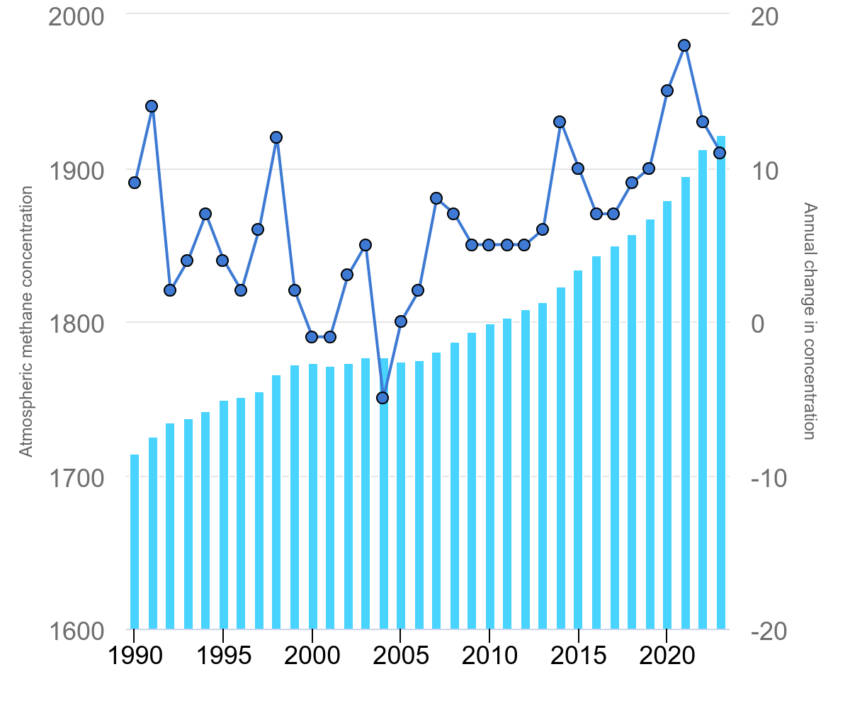The United States is witnessing an unprecedented surge in electricity demand and methane emissions, driven by the growing sectors of crypto and artificial intelligence (AI).
Energy expert Timothy Fox estimates that in 2023 alone, the data centers crucial for powering these industries consumed an astonishing 25 to 95 terawatt-hours.
Crypto’s 5% Share of Methane Emissions
The surge in energy consumption is propelling annual consumption and peak demand forecasts to their highest levels in over a decade, raising significant environmental concerns. Compounding this issue is the alarming increase in methane emissions, a potent greenhouse gas.
According to the International Energy Agency (IEA), the volume of methane released into the atmosphere was more than 120 million metric tons in 2023, a number the agency deems unacceptably high. The United States, as the leading national emitter of methane from oil and gas operations, is a major contributor.
A comprehensive study published in Nature revealed that oil and gas operations across six regions, including Texas, California, and Colorado, may release approximately 6.2 million tons of methane annually. The study parsed over 1 million aerial measurements of methane emissions.
Read more: How Much Electricity Does Bitcoin Mining Use?
Some of the largest cryptocurrency mining activities are heavily concentrated in Texas. Attracted by minimal crypto regulation and lower energy costs, Bitcoin miners such as Riot Platforms and Argo Blockchain have set up shop in Texas. Moreover, Riot recently invested $333 million in a 1 gigawatt Bitcoin mining facility in Corsicana, Texas.
Apart from carbon emissions, the increasing infrastructure has put an additional financial strain on residents by increasing local electricity prices. Residents must fork out roughly $250 million annually from higher power bills caused by additional demand.
Why the Renewables Transition Is Tricky
However, addressing these challenges requires a delicate balance between advancing technological innovation and ensuring environmental sustainability. Timothy Fox of Cleanview Energy articulates the dilemma of keeping grids’ stability while embracing a transition to renewable energy.
“The prevalent questions today are how do you transition to intermittent and cleaner resources without risking reliability…you need to keep conventional power plants online to serve growing demand. It is hard to green up while you’re growing,” Fox said.
However, 2024 is potentially a watershed year for environmental accountability concerning methane emissions. Tim Gould, an economist, points to the imminent deployment of new satellites to improve the monitoring of methane leaks as a turning point. Notably, MethaneSAT, backed by Alphabet Inc’s Google and the Environmental Defense Fund and other initiatives, also promises enhanced detail.
Read more: How To Mine Cryptocurrency: A Step-by-Step Guide
In the meantime, the US Department of the Treasury has proposed a crypto mining tax on electricity consumption. Starting in 2025, the proposal suggests a phased implementation of up to 30% tax over three years. Eventually, the tax aims to mitigate the environmental impact while demanding greater transparency in energy consumption reporting from these companies.
BeInCrypto contacted Riot Blockchain to comment on its future energy plans but did not hear back at press time.
The post Crypto and AI Demands Spike US Methane Emissions to 6 Million Tons appeared first on BeInCrypto.
